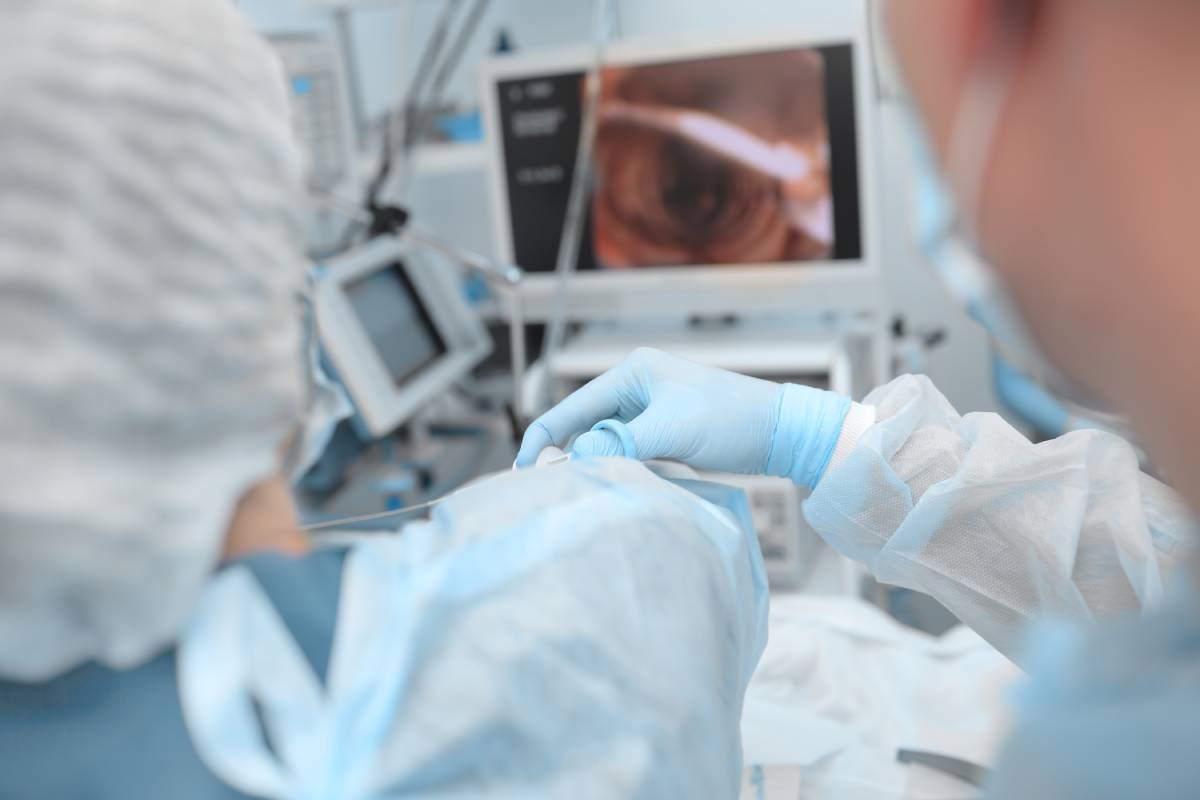Anesthesia for Bronchoscopy

Bronchoscopy is an investigative or therapeutic procedure that involves inserting an instrument into the lungs via the airway and is often performed under anesthesia. Rigid bronchoscopy generally warrants general anesthesia, while flexible bronchoscopy can be carried out under sedation supplemented with topical anesthesia [1]. It is critical for the practicing anesthetist to use the best method for each individual patient [2].
Prior to any procedure, since patients may be of American Society of Anesthesiologists III-IV physical status given the conditions that typically call for bronchoscopy, appropriate pre-operative tests need to be carried out. This will inform the best approach to anesthesia for the bronchoscopy depending on the context [3].
For rigid bronchoscopy
The ideal anesthetic regimen involves analgesia, an appropriate decrease in awareness or consciousness, and muscle relaxation. General anesthesia is usually used for rigid bronchoscopy. Anesthesia may be induced with propofol, etomidate or ketamine, with fentanyl or remifentanil in adults, or with inhalational agents in children. The patient’s vocal cords should be treated with lignocaine in order to prevent the occurrence of post-operative laryngospasm. In addition, fentanyl boluses and short acting beta blockers can be administered in order to prevent a pressor response.
Anesthesia is then maintained with remifentanil and an intravenous or inhalational agent. Target controlled infusion as part of a total intravenous anesthesia (TIVA) protocol may also be used.
The reversal of a patient’s neuromuscular block is carried out postoperatively, with neostigmine, glycopyrrolate or atropine based on the clinical situation and physician choice. It is important to completely reverse the block since most patients undergoing a bronchoscopy will not have the respiratory reserve to tolerate any residual block [3].
Following completion of the procedure and prior to the administration of a reversal agent, it is best to implement a cuffed endotracheal tube or a laryngeal mask airway. An endotracheal tube is generally preferred as an emergency flexible bronchoscopy may be needed.
For flexible bronchoscopy
In most cases, sedation is sufficient for flexible bronchoscopy. Depending on state regulations and facility protocol, light to moderate sedation may be provided directly by the proceduralist. A moderate level of sedation allows the patient to respond to verbal commands and recover more quickly compared to deeper anesthesia. The dose of sedative should generally be decreased in elderly patients. As there is always a small risk of bradycardia, patients need to be monitored for any signs of hypotension or respiratory depression. Additionally, the American College of Clinical Pharmacology has published detailed guidelines for the administration of anesthesia for flexible bronchoscopy [3].
Topical anesthesia is critical in flexible bronchoscopy since it helps with patient comfort. To this end, the nostrils, oropharynx and hypopharynx are anesthetized, and anesthesia beyond the glottis can also blunt the cough reflex and allow for the bronchoscopy procedure to take place as smoothly as possible. Lignocaine is the most common agent used for topical anesthesia, but topical anesthesia regimens tend to vary across clinics [3].
Providing sedation and anesthesia for patients undergoing a bronchoscopy requires a thorough understanding of pulmonary anatomy and physiology, clear communication between the anesthesia provider, proceduralist, and patient, and a patient-tailored anesthetic regimen in order to ensure the best possible patient outcomes [4].
References
1. Lentini, C. & Granlund, B. Anesthetic Considerations for Bronchoscopic Procedures. StatPearls (2023).
2. Galway, U. et al. Anesthetic considerations for bronchoscopic procedures: a narrative review based on the Cleveland Clinic experience. J. Thorac. Dis. 11, 3156–3170 (2019). doi: 10.21037/jtd.2019.07.29
3. Chadha, M., Kulshrestha, M. & Biyani, A. Anaesthesia for bronchoscopy. Indian J. Anaesth. 59, 565 (2015). doi: 10.4103/0019-5049.165851
4. Goudra, B. G., Singh, P. M., Borle, A., Farid, N. & Harris, K. Anesthesia for Advanced Bronchoscopic Procedures: State-of-the-Art Review. Lung 193, 453–465 (2015). DOI: 10.1007/s00408-015-9733-7